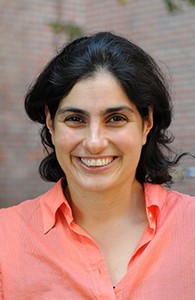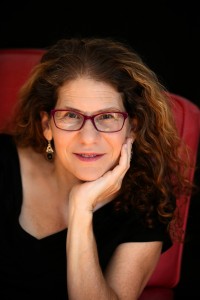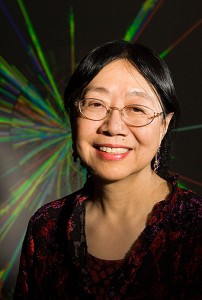Keynote Speaker
 Prof. Nergis Mavalvala, Massachusetts Institute of Technology
Prof. Nergis Mavalvala, Massachusetts Institute of Technology
Nergis Mavalvala, Marble Professor of Astrophysics at the Massachusetts Institute of Technology (MIT) and a 2010 recipient of a MacArthur “genius” award, is a physicist whose research focuses on the detection of gravitational waves from violent events in the cosmos that warp and ripple the fabric of spacetime. Mavalvala is best known for her work on the detection of gravitational waves. She was a member of the scientific team that in February 2016 announced the first direct detection of gravitational waves from colliding black holes using the Laser Interferometer Gravitational-Wave Observatory (LIGO) detectors. Mavalvala has also conducted pioneering experiments on generation and application of exotic squeezed states of light, and on laser cooling and trapping of macroscopic objects to enable observation of quantum phenomena in human-scale systems.
Prof. Mavalvala received a B.A. from Wellesley College and a Ph.D. from MIT. She was a postdoctoral fellow and research scientist at the California Institute of Technology before joining the Physics faculty at MIT in 2002. In her spare time, she loves to bicycle long distances, play squash, and spend time with her family.
Plenary Speakers
 Prof. Pupa Gilbert, University of Wisconsin-Madison
Prof. Pupa Gilbert, University of Wisconsin-Madison
Pupa Gilbert is an American biophysicist and geobiologist. She has been pioneering synchrotron spectromicroscopy methods since 1989. Since 2004 she has focused on biomineralization in sea urchins, mollusk shells, and tunicates. She was born and raised in Rome, Italy; her previous name was Gelsomina De Stasio. She was a staff scientist at the Italian National Research Council and at the Ecole Polytechnique Federale de Lausanne. In 1999 she moved to the University of Wisconsin-Madison as a professor in the Department of Physics.
Prof. Gilbert is a Knight of her native Italy and a Radcliffe Fellow. She was chair of the APS Division of Biological Physics. Her many awards include the Chancellor’s Distinguished Teaching Award at UW-Madison, The Outstanding Young Persons of the world, the American Competitiveness and Innovation Award, the Best University Research Award (DOE-BES-Geosciences), and the Science-NSF Visualizations Challenge. Prof. Gilbert teaches Physics in the Arts, for which she wrote a textbook, co-authored by Willy Haeberli.
 Prof. Monica Olvera de La Cruz, Northwestern University
Prof. Monica Olvera de La Cruz, Northwestern University
Monica Olvera de La Cruz is a soft-matter theorist, the Lawyer Taylor Professor of Materials Science and Engineering and Professor of Chemistry at Northwestern University. Prof. Olvera de la Cruz obtained her B.A. in Physics from the UNAM, Mexico and her Ph.D. in Physics from Cambridge University. She is a member of the U.S. National Academy of Sciences and a fellow of the American Academy of Arts and Sciences. She has facilitated the development of visionary outreach programs in the arts such as The Center for Scientific Studies in the Arts (NU-ACCESS), for which she currently serves as Co-Director.
Prof. Olvera de la Cruz has developed novel methods to analyze complex systems. Her current work is focused on self-assembly of heterogeneous molecules, charged molecules and in molecular electrolytes. She has described emergence of shape and patterns in membranes and in multicomponent complex mixtures. She and her students and postdocs discovered that electrostatics leads to spontaneous symmetry breaking in ionic membranes such as viral capsid (for which they were awarded the 2007 Cozarelli Prize) and in fibers. She and her group also demonstrated the spontaneous emergence of various regular and irregular polyhedral geometries in closed membranes with non-homogeneous elastic properties such as bacterial microcompartments.
 Prof. Eileen Pollack, University of Michigan
Prof. Eileen Pollack, University of Michigan
In 2005, when Lawrence Summers, then president of Harvard, asked why so few women achieve tenured positions in the hard sciences, Eileen Pollack set out to find the answer. In the 1970s, she had excelled as one of Yale’s first two women to earn a Bachelor of Science in physics. And yet, isolated, lacking in confidence, and starved for encouragement, she abandoned her lifelong dream of becoming a theoretical physicist. Years later, she thought back on her experiences and wondered what had changed in the intervening decades, and what challenges remained. Based on six years of interviewing dozens of teachers and students and reviewing studies on gender bias, her work The Only Woman in the Room: Why Science Is Still A Boys’ Club, was published by Beacon Press in 2015 (an excerpt appeared in the Sunday, October 3, 2013, issue of The New York Times Magazine). The Only Woman in the Room is an illuminating exploration of the cultural, social, psychological, and institutional barriers confronting women in the STEM disciplines. Pollack brings to light the struggles that women in the sciences are often hesitant to admit and provides hope that changing attitudes and behaviors can bring more women into fields in which they remain, to this day, seriously under-represented.
Prof. Pollack’s most recent novel, A Perfect Life (HarperCollins, 2016)), tells the gripping story of a geneticist’s hunt for the marker for the neurological disease that killed her mother and also threatens her. Prof. Pollack is also the author of the novels Breaking and Entering (winner of the Grub Street National Book Prize and a New York Times Editor’s Choice selection in 2012) and Paradise, New York, as well as two collections of short fiction, a children’s book about AIDS; and a book-length work of creative nonfiction entitled Woman Walking Ahead: In Search of Catherine Weldon and Sitting Bull. She is a professor in the Department of English at the University of Michigan and divides her time between Ann Arbor and Manhattan.
 Prof. Sau Lan Wu, University of Wisconsin-Madison
Prof. Sau Lan Wu, University of Wisconsin-Madison
Sau Lan Wu is a Chinese American particle physicist and the Enrico Fermi Distinguished Professor of Physics and Vilas Professor at the University of Wisconsin-Madison. The compelling desire of Professor Wu’s research program is to produce exciting physics results, i.e. her primary motivation is physics discovery. She is a key member of the ATLAS team of physicists at CERN in Geneva, Switzerland, whose ongoing research led to the discovery of the Higgs boson, a new subatomic particle, in 2012. Over her illustrious and storied career, she was an active participant in the discovery of the J/psi particle, which provided experimental evidence for the existence of the charm quark, and was a key contributor to the discovery of the gluon, which mediates the strong force.
Prof. Wu graduated from Vassar College (1963) with a B.A. in Physics. After earning an M.A. and a Ph.D. (1970) in Physics from Harvard University, she conducted research at MIT and DESY before joining the faculty of the physics department at the University of Wisconsin-Madison. Her many honors include fellowship in the American Academy of the Arts and Sciences and the High Energy and Particle Physics Prize of the European Physical Society.
